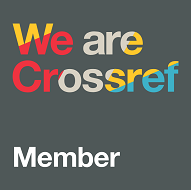Implementation of Problem-Based Learning-Stem Strategy on Students’ Conceptual Understanding and Critical Thinking in Fundamental of Chemical Equilibrium
Abstract
Keywords
Full Text:
PDFReferences
Adeleke, M. A. (2007). Gender disparity in mathematical performance revisited: can training in problem solving bring difference between boys and girls? Essays in Education, 21(1), 1–7.
Afriana, J., Permanasari, A., & Fitriani, A. (2016). Penerapan project based learning terintegrasi STEM untuk meningkatkan literasi sains siswa ditinjau dari gender. Jurnal Inovasi Pendidikan IPA, 2(2), 202–212.
Cantrell, P., Pekcan, G., Itani, A., & Velasquez‐Bryant, N. (2006). The effects of engineering modules on student learning in middle school science classrooms. Journal of Engineering Education, 95(4), 301–309.
Demircioğlu, H., Dinç, M., & Calik, M. (2013). The effect of storylines embedded within context-based learning approach on grade 6 students ‘understanding of ‘physical and chemical change ‘concepts. Journal of Baltic Science Education, 12(5), 682–691.
Ellizar, E., Putri, S. D., Azhar, M., & Hardeli, H. (2019). Developing a discovery learning module on chemical equilibrium to improve critical thinking skills of senior high school students. Journal of Physics: Conference Series, 1185(1), 12145.
Feinstein, N. W., & Kirchgasler, K. L. (2015). Sustainability in science education? How the Next Generation Science Standards approach sustainability, and why it matters. Science Education, 99(1), 121–144.
Hapiziah, S., Suhery, T., & Mujamil, J. (2017). Pengembangan bahan ajar kimia materi laju reaksi berbasis stem problem-based learning kelas XI SMA Negeri 1 Indralaya Utara. Jurnal Penelitian Pendidikan Kimia: Kajian Hasil Penelitian Pendidikan Kimia, 2(2), 206–219.
Hasnunidah, N., Susilo, H., Irawati, M., & Suwono, H. (2020). The contribution of argumentation and critical thinking skills on students’ concept understanding in different learning models. Journal of University Teaching & Learning Practice, 17(1), 6–13.
Ibrahim, M., & Mohamad, N. (2004). Pembelajaran berdasarkan masalah. UNESA University Press.
Khoiriyah, N., Abdurrahman, A., & Wahyudi, I. (2018). Implementasi pendekatan pembelajaran STEM untuk meningkatkan kemampuan berpikir kritis siswa SMA pada materi gelombang bunyi. Jurnal Riset Dan Kajian Pendidikan Fisika, 5(2), 53–62.
Merdekawati, K. (2013). Pengaruh Kemampuan Matematik Terhadap Prestasi Belajar Kimia. Asian Journal of Innovation and Entrepreneurship, 2(01), 26–31.
Muhali, M., Prahani, B. K., Mubarok, H., Kurnia, N., & Asy’ari, M. (2021). The impact of guided-discovery-learning model on students’ conceptual understanding and critical thinking skills. Jurnal Penelitian Dan Pengkajian Ilmu Pendidikan: E-Saintika, 5(3), 227–240.
Nasr, K. J., & Ramadan, B. (2008). Impact assessment of problem-based learning in an engineering science course. Journal of STEM Education: Innovations and Research, 9(3), 16–24.
Rehmat, A. P. (2015). Engineering the path to higher-order thinking in elementary education: A problem-based learning approach for STEM integration. University of Nevada.
Rumansyah, Y. (2002). Penerapan metode latihan berstruktur dalam meningkatkan pemahaman siswa terhadap konsep persamaan kimia. Jurnal Pendidikan Dan Kebudayaan, 35(8), 172–179.
Sa’adhah, E. (2019). Penerapan model pembelajaran STEM (Science, Technology, Engineering and Matemathics) sebagai upaya meningkatkan keaktifan dan hasil belajar siswa pada mata pelajaran dasar listrik dan elektronika di SMKN 1 Nanggulan. Jurnal Pendidikan Teknik Mekatronika, 9(1).
Stohlmann, M., Moore, T. J., & Roehrig, G. H. (2012). Considerations for teaching integrated STEM education. Journal of Pre-College Engineering Education Research (J-PEER), 2(1), 1–7.
Sukmana, R. W. (2018). Pendekatan science, technology, engineering and mathematics (STEM) sebagai alternatif dalam mengembangkan minat belajar peserta didik sekolah dasar. Pendas: Jurnal Ilmiah Pendidikan Dasar, 2(2), 189–197.
Trianto, T. (2007). Model-model pembelajaran inovatif berorientasi Konstruktivistik. Prestasi Pustaka.
Wan Husin, W. N. F., Mohamad Arsad, N., Othman, O., Halim, L., Rasul, M. S., Osman, K., & Iksan, Z. (2016). Fostering students’ 21st century skills through Project Oriented Problem Based Learning (POPBL) in integrated STEM education program. Asia-Pacific Forum on Science Learning & Teaching, 17(1).
Wang, M. (2009). Investigation of problem-based learning in basic nursing. In Qingdao University, Shandong, China (in Chinese).
Yanwar, A., & Fadila, A. (2019). Analisis kemampuan berpikir kritis matematis: Dampak pendekatan saintifik ditinjau dari kemandirian belajar. Desimal: Jurnal Matematika, 2(1), 9–22.
Yulianti, E., & Gunawan, I. (2019). Model pembelajaran problem based learning (PBL): Efeknya terhadap pemahaman konsep dan berpikir kritis. Indonesian Journal of Science and Mathematics Education, 2(3), 399–408.
DOI: http://dx.doi.org/10.17977/um048v28i1p1-6
Refbacks
- There are currently no refbacks.
Copyright (c) 2022 Jurnal Ilmu Pendidikan

This work is licensed under a Creative Commons Attribution 4.0 International License.
| Jurnal Ilmu Pendidikan |
![]() Jurnal Ilmu Pendidikan is licensed under a Creative Commons Attribution 4.0 International License.
Jurnal Ilmu Pendidikan is licensed under a Creative Commons Attribution 4.0 International License.

2.png)
1.png)
1.png)
1.png)
1.png)
4.png)
.png)
1.png)
.png)
.png)


3.png)
1.png)
1.png)


